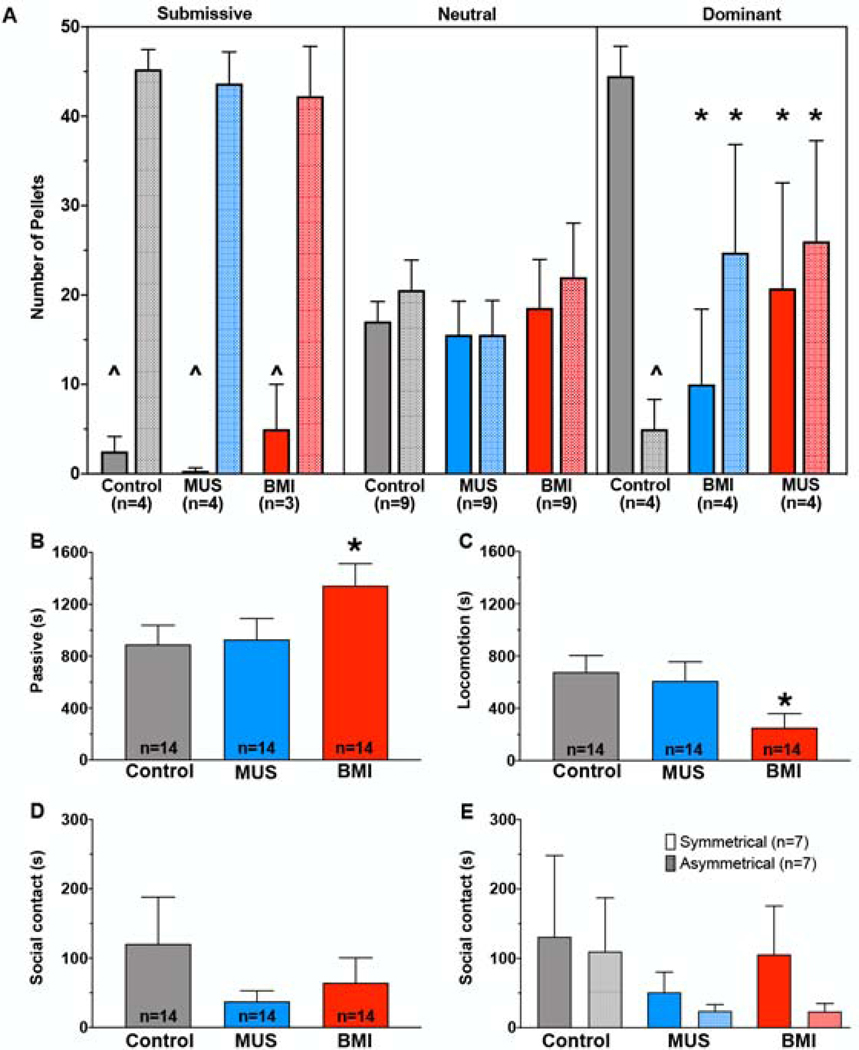Figure 4.
Dominant animals take fewer rewards in a competitive reward-seeking task within a familiar dyad after either disinhibition or inhibition of BLA. A) Number of food pellets taken under the treatment with control (saline or sham infusion), BMI, or MUS in BLA, as a function of dominance status (Submissive, Neutral, Dominant) of the infused animal within the dyad. The infused animal and the non-infused conspecific are indicated by the solid and hashed bars, respectively. Within the Dominant infused animals, MUS and BMI both resulted in a significant reduction in pellets taken by the subject and an increase in pellets taken by the non-infused conspecific. B-E indicate behaviors of the animals within each dyad recorded immediately after the competitive task (30 minutes). B) BMI significantly increased passive behavior in the infused animal compared with MUS and Control condition. C) BMI significantly reduced total locomotion in the infused animal compared with MUS and Control condition. D) Total social contact was not altered across drug treatments. E) Total social contact does not differ by drug treatment when compared in asymmetrical dyads (infused animal is submissive and the non-infused partner is dominant and vice versa) versus symmetrical dyads where no clear hierarchy exists. *p<0.05, relative to the control session. ^=p<0.05, relative to the other partner.

